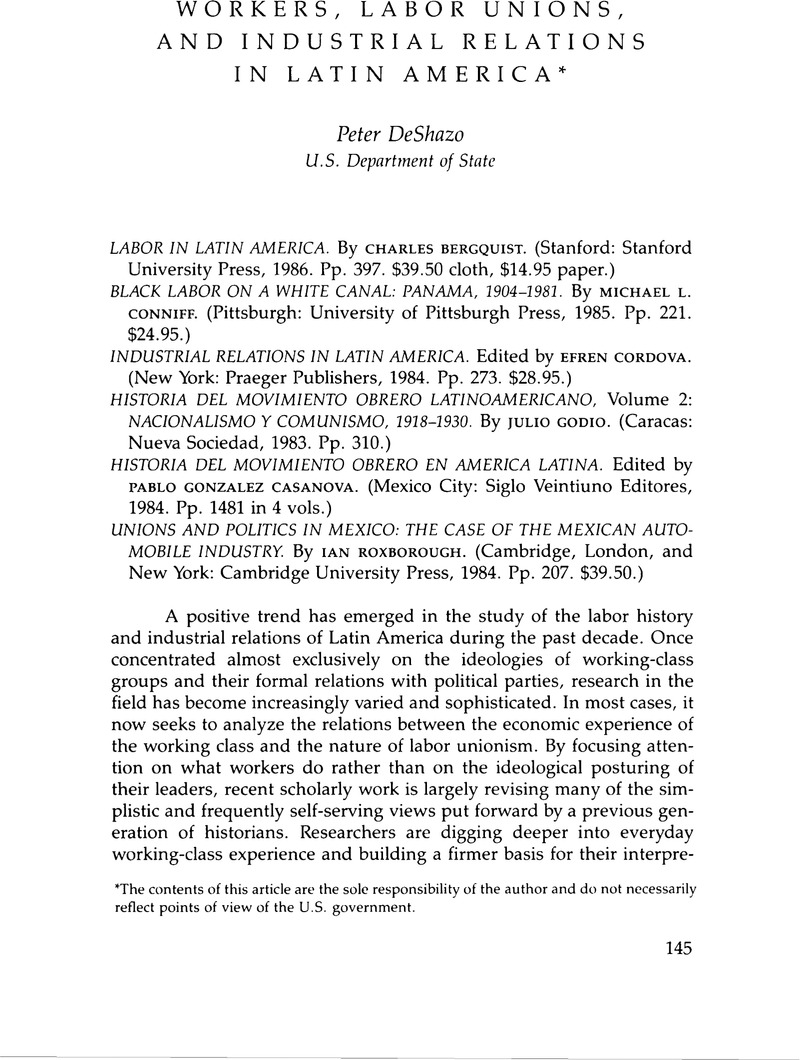Article contents
Workers, Labor Unions, and Industrial Relations in Latin America
Review products
Published online by Cambridge University Press: 12 October 2022
Abstract

- Type
- Review Essays
- Information
- Copyright
- Copyright © 1988 by Latin American Research Review
Footnotes
The contents of this article are the sole responsibility of the author and do not necessarily reflect points of view of the U.S. government.
References
Notes
1. Arthur Lawrence Stickell, “Migration and Mining: Labor in Northern Chile in the Nitrate Era, 1880–1930,” Ph.D. diss., Indiana University, 1979.
2. For a comparison of wages and conditions in the North with those of Santiago, see Peter DeShazo, Urban Workers and Labor Unions in Chile, 1902-1927 (Madison: University of Wisconsin Press, 1983), 84–85.
3. A recent study using strike statistics compiled by Chilean historian Jorge Barría shows little strike activity occurring in the nitrate zone during the strike-prone years of 1918–1925. See Cristósomo Pizarro, La huelga obrera en Chile, 1890-1970 (Santiago: Ediciones Sur, 1986), 63.
4. DeShazo, Urban Workers, 48–49.
5. Ibid., 49. Pizarro's La huelga obrera counts nearly as many strikes in the coal industry, where capital was almost entirely national, as in the nitrate camps between 1918 and 1925 (p. 63).
- 1
- Cited by




